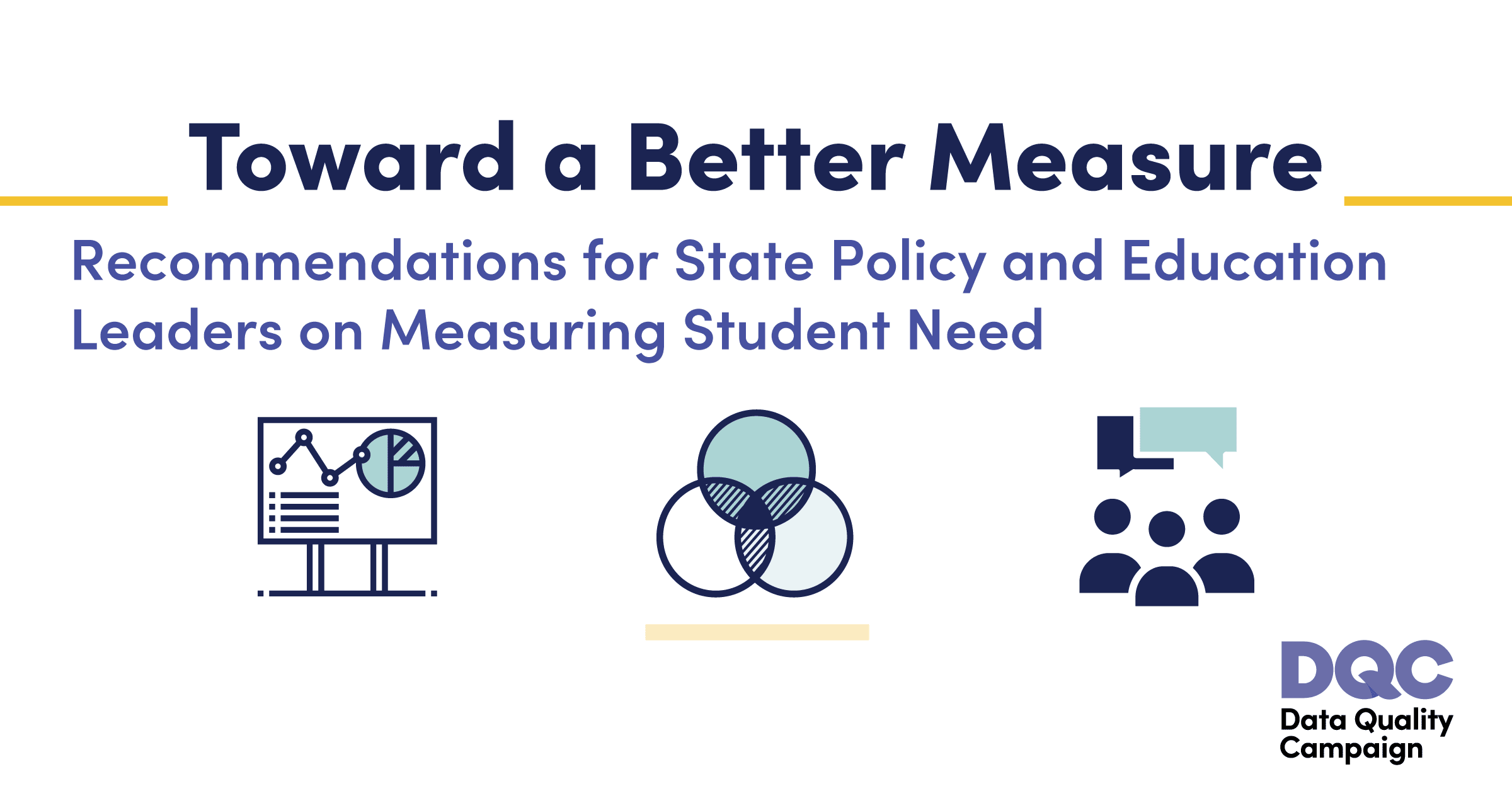In the interest of accuracy and equity, state policymakers and education leaders should look to other measures to better identify students who would benefit from additional resources
WASHINGTON (March 29, 2022) — For decades, education leaders and policymakers have used free- and reduced-price lunch (FRL) eligibility to make decisions about accountability and state funding levels for schools. However, using FRL as a measure provides decisionmakers with little nuance about students’ experiences and has become increasingly inaccurate as a proxy for student poverty.
In a new resource, “Toward a Better Measure: Recommendations for State Policy and Education Leaders on Measuring Student Need,” the Data Quality Campaign (DQC) recommends that policymakers and education leaders act in two ways to more accurately understand student risk and family economic disadvantage:
- In the near term, adopt measures of economic disadvantage based on direct certification instead of FRL eligibility. Policymakers should use existing state enrollment records from programs such as Supplemental Nutrition Assistance Program (SNAP) and Temporary Assistance for Needy Families (TANF) to identify students in need. In addition to more accurately reflecting household income than FRL eligibility, this approach, known as direct certification, minimizes the administrative burden on schools to collect data from families, as it is based on preexisting state-level data.
- In the longer term, look beyond student economic disadvantage and explore more holistic means of measuring the many ways that circumstance and policy disadvantage students. Direct certification data is a much more accurate proxy for student economic disadvantage than FRL eligibility, but it has its own limitations. Leaders must adopt measures that provide deeper insights into student needs.
“Leaders should always be examining whether their measures provide them with the best data to answer their specific questions. In the case of student need, those measures are outdated and insufficient,” explained DQC President and CEO Jennifer Bell-Ellwanger. “Switching to a method like direct certification will ultimately provide policymakers with more accurate data and a less burdensome collection process. And while beginning to develop even more nuanced indicators of student disadvantage will take time and effort, using a more accurate measure to understand and address student need is worth it.”
Since 1946, schools nationwide have collected household income data from their students to identify those eligible for FRL—but education leaders, policymakers, and researchers have used this data for accountability, reporting, state funding allocations, research, and advocacy. DQC offers the following considerations for state leaders identifying new measures to replace the current measures of student disadvantage:
- Use multiple indicators to capture different dimensions of disadvantage for different purposes. FRL and direct certification data are widely used to evaluate and target resources to schools serving vulnerable students. Yet as individual-level measures, they are not designed to capture the many factors that influence student access to opportunities, such as historic disinvestment, racial or economic segregation, or access to opportunities.
- Explore how information in existing data systems can provide nuanced measures. FRL and direct certification are binary measures—they capture student poverty status at only a single point in time and with varying levels of accuracy. More sophisticated measurement approaches can provide much more information about student needs.
- Prioritize principles of equitable and ethical data use.
- Traditional measures of student need focus on individual-level need but fail to acknowledge the historic, systemic factors that influence student access to opportunities and barriers to success. By using more community-level measures, policymakers can ensure that they are promoting equitable solutions.
- By practicing asset framing—or talking about students in terms of their strengths—policymakers can reframe conversations about educational outcomes. It is also critical that leaders include parents and the public in conversations about how and why they are measuring student need.
“For years, policymakers have viewed poverty and need as synonymous—and they are not. Policymakers must seek out and employ more precise and nuanced measures of obstacles to student learning so that they can truly understand student need,” said Bell-Ellwanger. “By doing so, leaders will have the information they need to more accurately identify and redress systemic barriers to student success.”
Read the full resource on DQC’s website.
###
Contact: Blair Mann, bmann@dataqualitycampaign.org, 610-724-5914
About the Data Quality Campaign
The Data Quality Campaign is a nonprofit policy and advocacy organization leading the effort to bring every part of the education community together to empower educators, families, and policymakers with quality information to make decisions that ensure that students excel. For more information, go to dataqualitycampaign.org and follow us on Facebook and Twitter (@EdDataCampaign).


